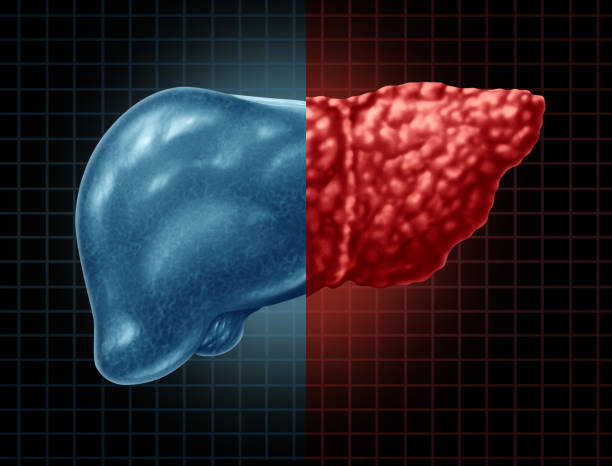What is a Contraction of the Economy?
A contraction of the economy is an adverse condition that affects the overall economy. The contraction of an economy may be the result of a number of factors. The contraction can either be sudden, gradual, or prolonged. A contraction can also be the result of an economy that is already at the end of its expansionary phase.
Contractions of the economy
Economic contraction is a period of decreased economic activity. It is opposite of economic growth, which is characterized by a sustained increase in economic activity. The impact of a contraction on the economy can be far-reaching, as the reduction in sales negatively affects the profitability and cash flow of businesses. It can also result in the collapse of some enterprises. When the economy is in contraction, many businesses cut costs by laying off employees. Consequently, the level of demand also decreases.
During an economic expansion, the number of jobs and output increase. On the other hand, when the economy is in contraction, the number of vacancies decreases. This is reflected in the Beveridge curve. In contractions, the number of jobs available is very small and the unemployment rate is extremely high, whereas in expansions, there are a large number of vacancies.
The Great Recession was one of the worst examples of an economic contraction in the United States. It caused the economy to contract by 4.3 percent, affecting millions of people. The unemployment rate nearly doubled, reaching 10 percent in October 2009. A number of factors contributed to the Great Recession, including a savings glut in Asia and the collapse of the housing market.
Recession
A recession occurs when an economy slows down. As a result, economic output falls and employment and consumer spending decrease. This is because demand for goods and services falls, and there are less goods and services available for consumers. A recession can also lower interest rates, which support the economy. Meanwhile, the government’s budget deficit widens due to reduced tax revenues, and more people become eligible for government assistance.
While there are a number of indicators used to determine whether the economy is in recession, the National Bureau of Economic Research (NBER) uses a four-point scale to determine the severity of the situation. Indicators that indicate a recession include the unemployment rate rising by half a percentage point from its lowest level over the previous 12 months. At the moment, the unemployment rate is below the 50 basis-point threshold.
Recessions can occur in the same country or in different countries. For example, the early 1980s recession, in the United States, can be considered a double-dip recession. The economy fell into a recession in January 1980, then recovered briefly during the first three months of 1981. A few months later, the economy fell back into a recession.
Although the probability of a recession is never zero, the current trends indicate that a recession is unlikely. A strong labor market and balanced consumer balance sheets may ease the transition. CEA will continue to monitor indicators to assess the economic cycle’s health. This will help determine if there is a need for an economic stimulus.
Throughout history, the United States has experienced 34 recessions, five of which occurred since 1980. One of these recessions was the result of the 1973 oil crisis, which followed a second recession in 1937. Recessions can be caused by a number of factors, including high interest rates, low consumer confidence, stagnant wages, and asset bubbles. A recession can cause the economy to shrink by as much as 5%. The European Union defines a recession as two consecutive quarters of negative real GDP growth.
Expansionary austerity
The most common characterization of austerity programs is fiscal contraction, but there is a more complex explanation. Fiscal adjustment programs are usually multiyear plans. They involve tax increases and spending cuts that are correlated with the expectations of consumers. This means that a government’s fiscal policy cannot simply be a one-time event.
Tax increases can create a larger tax burden in the future, but spending cuts have a more gradual effect. These measures may be viewed as expansionary in a boom economy, while they are contractionary in a recession. Similarly, cuts to current public investment have intergenerational redistribution consequences. Although the intended outcomes of austerity measures may not be based on redistribution, the costs and benefits of such policies are often overlooked by policymakers.
Expansionary austerity is not the answer to every hiccup in the economy. However, the literature shows that micromanaging the macroeconomy is unlikely to lead to a successful outcome. Indeed, five years after the Great Recession, considerable slack remains in the U.S. economy. This suggests that the premature move to austerity may have been a mistake.
The author’s simulation includes 200 episodes of austerity in 16 countries. He examines the effects of both tax-based and expenditure-based plans on the debt-to-GDP ratio. During the first year of a tax-based austerity plan, the public debt tends to increase while the effects of expenditure-based austerity are stabilizing. Afterward, the results of austerity plans tend to become neutral.
In a recent report, the Office for Budget Responsibility said that fiscal adjustment policies have caused 1.4 percent of GDP growth in the United Kingdom. In other countries, the effect of such policies has been negative. It is a widely-held view that fiscal adjustment policies can cause economic growth. This is an important consideration when planning a fiscal adjustment strategy, as they may lubricate the process.
Liquidity support actions
During times of recession, the Federal Reserve has acted to stabilize the money market and prevent a decline in aggregate demand. It has also taken actions to support the supply of credit and prevent the contraction of the economy. These actions include changes to market operations and the adoption of new policies.
Financial institutions are particularly vulnerable to liquidity problems. These institutions generate revenue by lending long-term on home mortgages and capital investments while borrowing short-term from depositor accounts. This practice is known as maturity mismatch. Because of this, financial institutions need to constantly secure funds in order to meet their immediate obligations. This can be done by raising interest rates or liquidating long-term assets.
The Federal Reserve relies on several lending facilities to keep credit flowing. These include the Primary Dealer Credit Facility, Commercial Paper Funding Facility, Monetary Market Mutual Fund Liquidity Facility, and Secondary Market Corporate Credit Facilities. These institutions lend to households, financial market participants, and state and local governments.
Economic recovery
The economic recovery is the process in which the economy returns to a normal level, after a contraction. This recovery involves a new level of prices, and new use of the capital assets that failed businesses once held. New businesses use these assets in the same manner, or in completely new ways.
Economic recovery is often preceded by the rise of leading indicators. The recession has led to a change in attitudes towards consumption and business, which restructures the economy. As a result, the economy has the opportunity to grow and increase employment. Consumers, businesses, and government agencies change their behavior and attitudes in order to promote recovery.
Moreover, uncertainty about the economy has also hampered recovery. An economic policy uncertainty index was developed by economists to measure this uncertainty by analyzing newspaper articles. According to Baker, Bloom, and Davis (2013), this index measures how uncertain the economy is about the future course of policy. While the recent decline in COVID-19 is a positive sign, it is still premature to call for a complete recovery.
The recovery pace will depend on how quickly consumers can spend their money. It is crucial that the consumer spending increase be robust as it stimulates business output. Consumer spending makes up more than half of the GDP in most countries. This means that an increase in consumer spending will ultimately help the recovery rate. This is important because a strong economy is the key to recovery.
Despite the difficulties faced by the economy, recovery after a recession can be achieved. When a recession occurs, the economy typically reaches a trough before resuming upward movement. A rebound in economic activity signals a new expansion.



